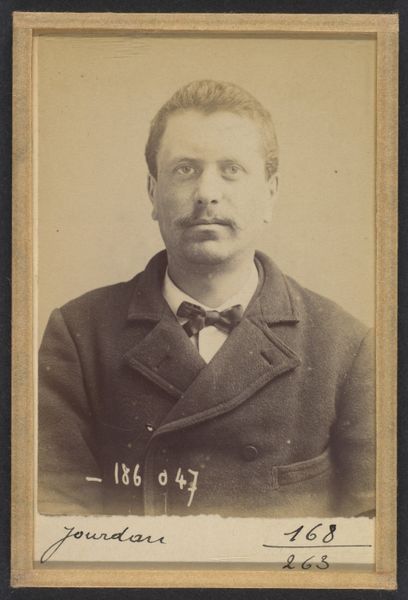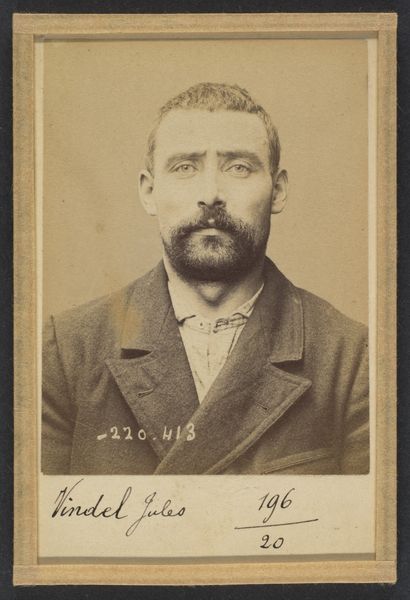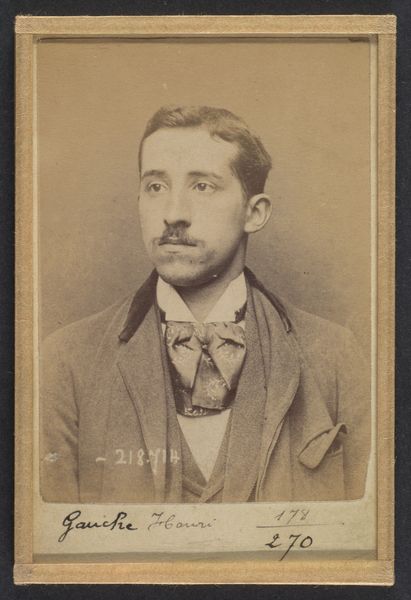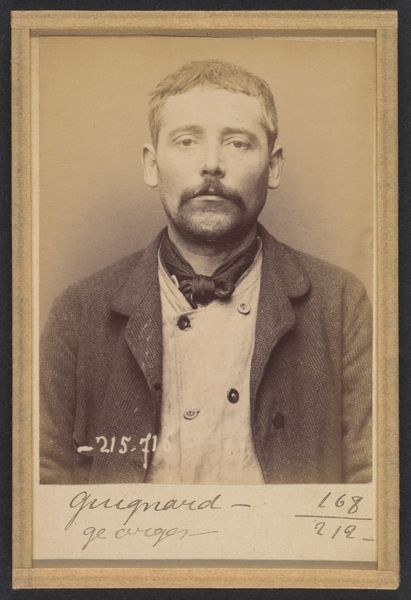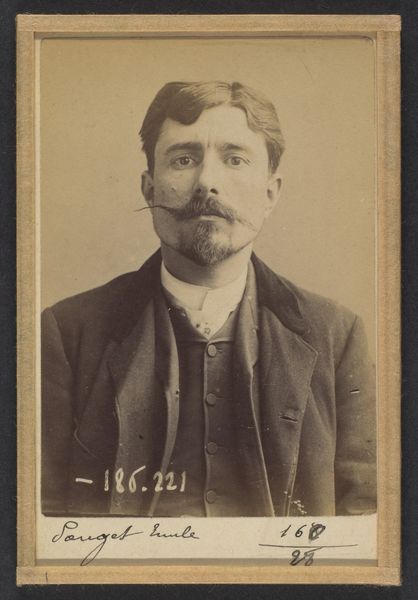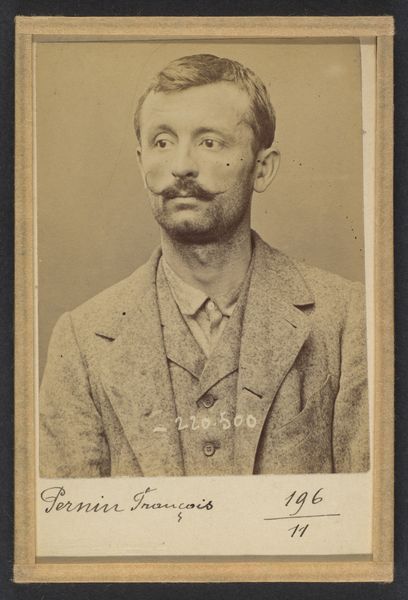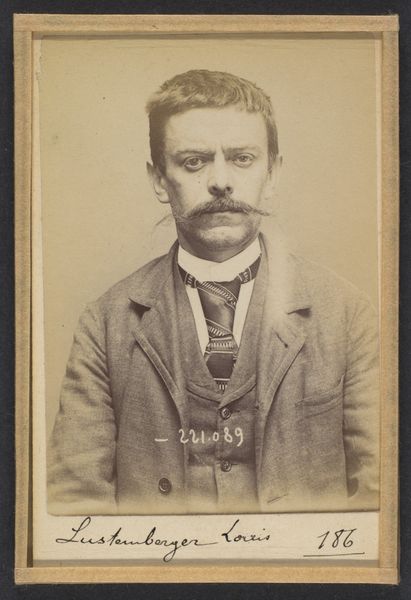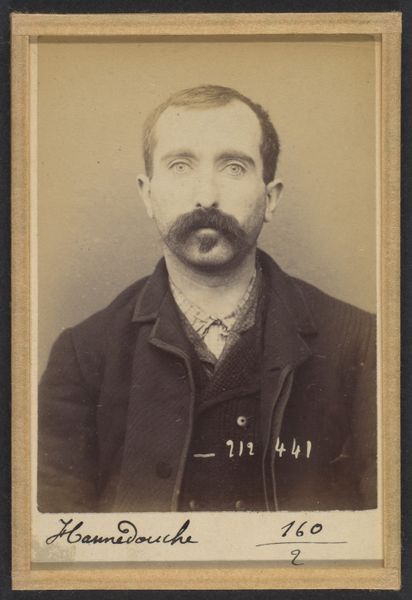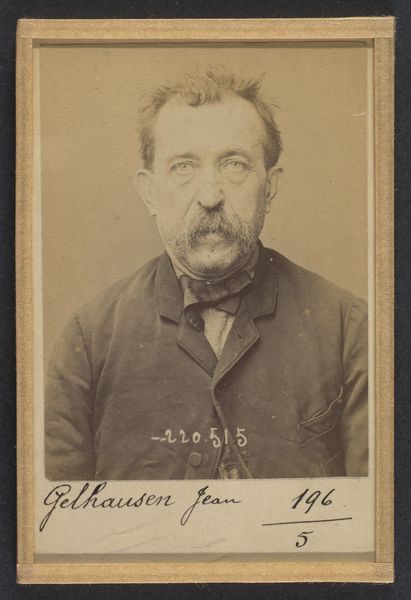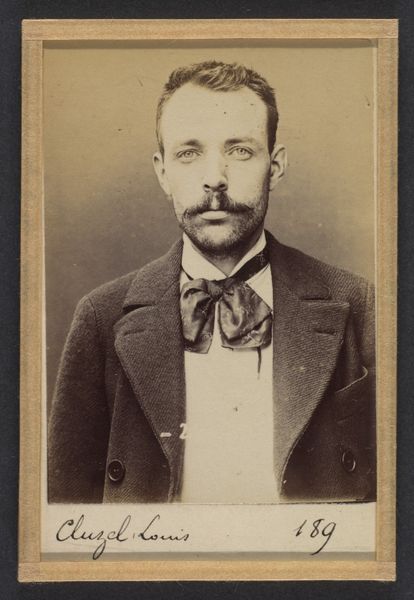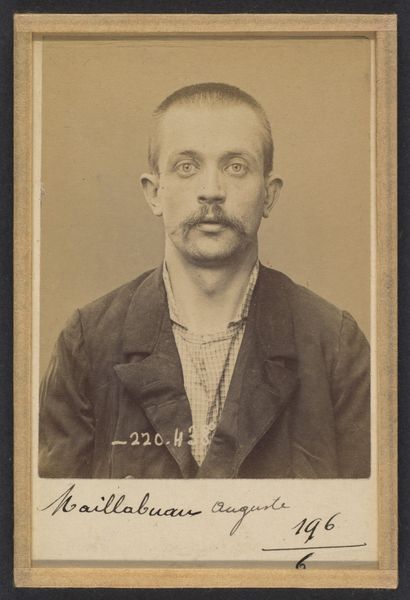
Colombet. Frédéric. 28 ans, né à Prigonnieux (Dordogne). Employé de commerce. Anarchiste. 2/3/94. 1894
0:00
0:00
daguerreotype, photography
#
portrait
#
portrait
#
daguerreotype
#
photography
#
history-painting
#
realism
Dimensions: 10.5 x 7 x 0.5 cm (4 1/8 x 2 3/4 x 3/16 in.) each
Copyright: Public Domain
Curator: This haunting daguerreotype captures a man identified as Fréderic Colombet. The image, taken in 1894, is attributed to Alphonse Bertillon. The text included with the image states that Colombet was a 28-year-old shop assistant and, significantly, an anarchist. Editor: My immediate reaction is one of melancholic curiosity. It's sepia-toned, and this combined with his solemn expression creates a striking effect. What exactly led to this photograph? The details provided are sparse but laden with implications, especially his profession as an anarchist. Curator: Well, Bertillon pioneered forensic photography. This image, therefore, isn’t just a portrait; it's a record, evidence. The stark lighting and the subject's direct gaze – devoid of artifice, it reveals as much about the man as it does about the societal attitudes towards anarchism at the time. The framing of the image invites the gaze back into the individual portrayed, his stare somewhat daring the viewer. Editor: Exactly! The “anarchist” label transforms the portrait into a statement about political dissent. It places Colombet within the larger historical narrative of late 19th-century Europe—a period marked by profound social unrest and radical ideologies. Even Colombet’s neat attire speaks to the complex, often contradictory, nature of radicalism. The very fact it's an archival image changes the implications completely. Curator: And that attire becomes part of the man’s presentation, doesn't it? This seemingly objective mugshot transcends its function. The inclusion of his profession and political leaning elevates it beyond simple identification; this provides an almost iconic resonance to an anarchist who remains defiant to this day. The photographic texture becomes enmeshed within layers of both cultural and visual memories, bringing forward certain signifiers that point to resistance. Editor: The use of photography itself speaks volumes. While seemingly objective, early photography like this was often employed to reinforce existing power structures—labeling and categorizing individuals perceived as threats to social order. How does photography impact a political movement or resistance, and how do symbols operate within a given image or within the anarchist cause itself? Curator: Looking at this portrait, the enduring relevance of political resistance becomes ever more prominent, revealing the role of memory and photography to influence and bring shape to movements throughout the course of history. Editor: A potent reminder that individual stories, however captured, reflect larger social and political currents, always.
Comments
No comments
Be the first to comment and join the conversation on the ultimate creative platform.

